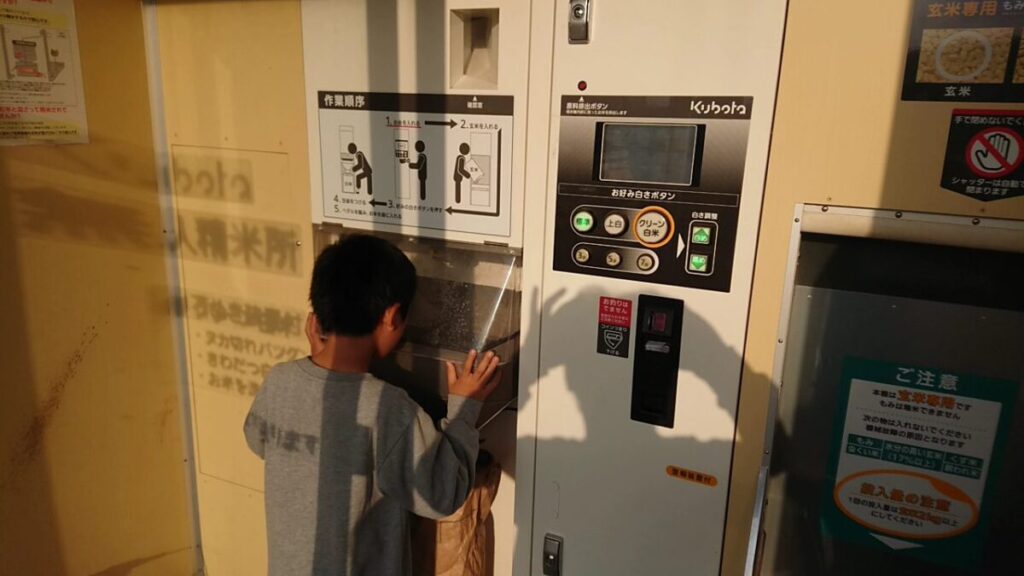
he photo captures 2-1, peering into the rice-polishing machine (laughs).
Located about a 5-minute walk from Grandma’s house, there’s a farmers’ cooperative where we’ve often processed rice for generations.
Even Second Son used to tag along with Grandma when she went for rice polishing, pulling a cart for Grandma.
You might not see it as often in urban areas, but recently, coin-operated rice-polishing machines like the one in the photo have become more convenient, popping up in home centers and shopping centers.
In Second Son’s memorable rice-polishing machine, located in a corner of the cooperative’s warehouse, a large machine with exposed flat belts conveying power to the motor. The mysterious movement of vintage equipment in the dim warehouse has left a lasting impression.
Even now, Second Son, who is still involved in rice planting and harvesting, receives rice from Grandma’s house for home use. Since it’s only for a family of three, they receive unpolished rice for storage to consider both temperature and humidity in a relatively constant hallway corner.
They then use a home rice-polishing machine to polish just the amount needed before cooking. Unpolished rice stays fresh significantly longer than polished rice, and freshly polished rice is undeniably more delicious.
By the way, at Second Son’s house, they don’t use the rice cooker’s measurements when cooking rice.
Why? Because they simply put unpolished rice into the rice-polishing machine from the bag, wash it, and cook it without measuring the amount precisely. They estimate the cooking amount by sight (laughs).
Guided by Second Son’s wife, 2-1 has adopted the same method. During the new rice season, adjusting the water level can be a bit challenging due to variations, but now, 2-1 has become the one in charge of cooking rice in our household (laughs).
Even though still small, there’s a gradual growth evident.



